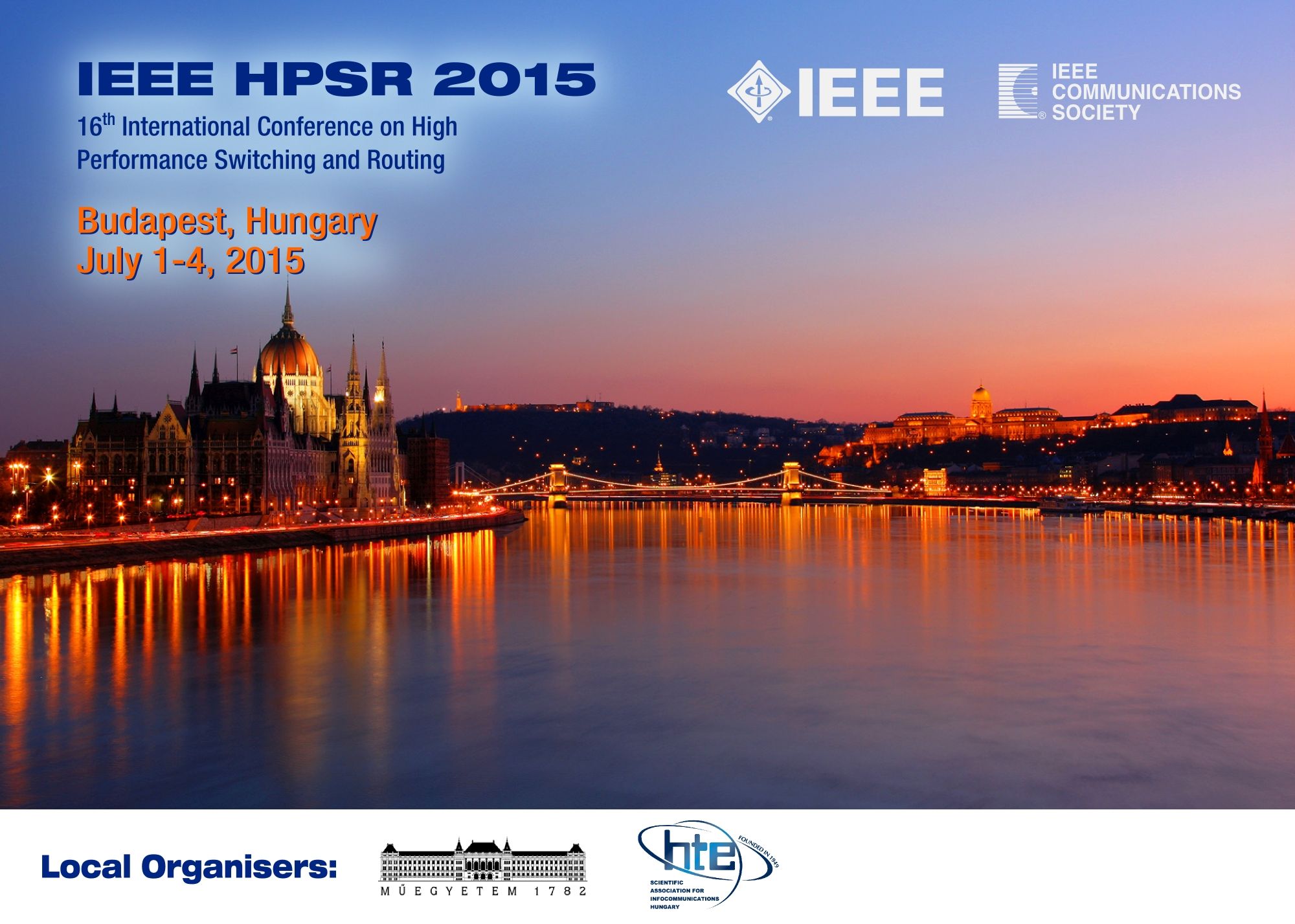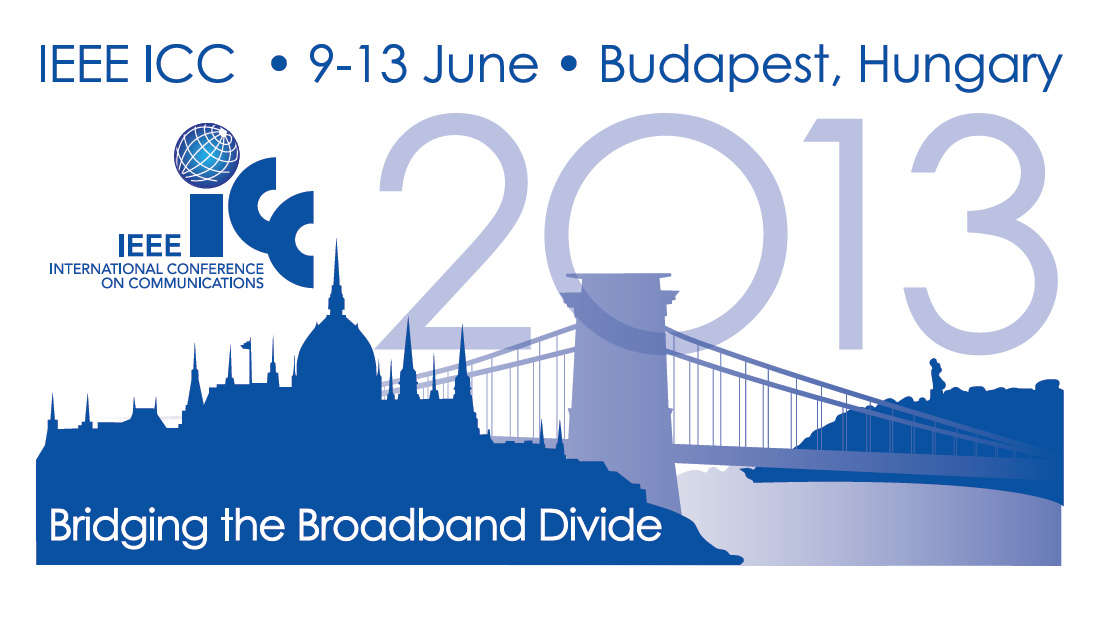2024. 1st Issue
Volume XVI, Number 1
Table of contents 
Full issue 
MESSAGE FROM THE EDITOR-IN-CHIEF
Pal Varga
Recent ad
WITH the
Download
PAPERS FROM OPEN CALL
Iqbal Jebril, M. Premkumar, Ghaida Muttashar Abdulsahib, S. R. Ashokkumar, S. Dhanasekaran, Oshamah Ibrahim Khalaf, and Sameer Algburi
Deep Learning based DDoS Attack Detection in Internet of Things: An Optimized CNN-BiLSTM Architecture with Transfer Learning and Regularization Techniques 
In recent days, with the rapid advancement of technology in informatics systems, the Internet of Things (IoT) becomes crucial in many aspects of daily life. IoT applications have gained popularity due to the availability of various IoT enabler gadgets, such as smartwatches, smartphones, and so on. However, the vulnerability of IoT devices has led to security challenges, including Distributed Denial-of-Service (DDoS) attacks. These limitations result from the dynamic communication between IoT devices due to their limited data storage and processing resources. The primary research challenge is to create a model that can recognize legitimate traffic while effectively protecting the network against various classes of DDoS attacks. This article proposes a CNN-BiLSTM DDoS detection model by combining three deep-learning algorithms. The models are evaluated using the CICIDS2017 dataset against commonly used performance criteria which the models perform well, achieving an accuracy of around 99.76%, except for the CNN model, which achieves an accuracy of 98.82%. The proposed model performs best, achieving an accuracy of 99.9%.
Reference
DOI: 10.36244/ICJ.2024.1.1
Download 
Balázs Solymos, and László Bacsárdi
Secure post-processing for non-ideal photon arrival time based quantum random number generator 
Utilizing the inherently unpredictable nature of quantum mechanics, quantum random number generators (QRNGs) can provide randomness for applications where quality entropy (like in the case of cryptography) is essential. We present a post-processing scheme utilizing min-entropy estimation and hashing for optical QRNGs based on measuring individual photon arrival times. Our method allows for the handling of possible errors due to non-ideal components or even a potential attacker, given some basic assumptions to reliably produce a safe, good quality, uniformly distributed bitstream as output. We validate our results with an intentionally non-ideal measurement setup to show robustness, while also statistically testing our final output with four popular statistical test suites.
Reference
DOI: 10.36244/ICJ.2024.1.2
Download 
Jyoti P. Patra, Bibhuti Bhusan Pradhan, and M. Rajendra Prasad
An Ordered QR Decomposition based Signal Detection Technique for Uplink Massive MIMO System 
Signal detection turns out to be a critical challenge in massive MIMO (m-MIMO) system due to the deployment of large number of antennas at the base station. Although, the mini mum mean square error (MMSE) is one of the popular signal detection method, but, it requires matrix inversion with cubic complexity. In order to reduce computational complexity, sev eral suboptimal signal detection methods were proposed such as Gauss-Seidel, successive over relaxation, Jacobi, Richardson methods. Although, these methods provide low complexity but their performance are limited to MMSE method. In this paper, we have proposed two signal detection techniques namely QR decompositions (QRD) and ordered QRD (OQRD). Finally, the performances of proposed signal detection methods are com pared with various conventional methods in terms of symbol er ror rate (SER) and computational complexity. The simulation re sults validate that the proposed methods outperform the MMSE method with substantially lower computational complexity.
Reference
DOI: 10.36244/ICJ.2024.1.3
Download 
Yasir Ahmed Idris Humad, and Levente Dudás
Resonant Radar Reflector On VHF / UHF Band Based on BPSK Modulation at LEO Orbit by MRC-100 Satellite
This paper presents a novel method for identify ing and tracking PocketQube satellites: the MRC-100 satellite is a model, and this method is based on a resonant radar reflec tor. The resonant reflector’s basic concept is that the resonant reflector uses a VHF/UHF communication subsystem antenna; there is no radiated RF signal, which means the power con sumption is only some Milliampere (mA). The continuous wave (CW) illuminator RF source is on the ground, and the onboard antenna receives the CW RF signal from the Earth. The micro controller (uC) periodically switches PIN diode forming BPSK modulated signal reflection so that another Earth station can receive the backscattered Binary Phase Shift Keying (BPSK) modulated signal. Also, it can detect the satellite if the ground station receiver can use a matched filter like a correlation re ceiver. If the ground station receiver knows the BPSK code of the satellite, it can detect it. If not, there is no way to detect the satellite. This method is similar to Radio Frequency Identifica tion (RFID) applications, but the reader is the ground station, and the tag is the satellite.
Reference
DOI: 10.36244/ICJ.2024.1.4
Download 
Ákos Leiter, Edina Lami, Attila Hegyi, József Varga and László Bokor
Closed-loop Orchestration for Cloud-native Mobile IPv6 
With the advent of Network Function Virtualization (NFV) and Software-Defined Networking (SDN), every network service type faces significant challenges induced by novel requirements. Mobile IPv6, the well-known IETF standard for network-level mobility management, is not an exemption. Cloud-native Mobile IPv6 has acquired several new capabilities due to the technological advancements of NFV/SDN evolution. This paper presents how automatic failover and scaling can be envisioned in the context of cloud-native Mobile IPv6 with closed-loop orchestration on the top of the Open Network Automation Platform. Numerical results are also presented to indicate the usefulness of the new operational features (failover, scaling) driven by the cloud-native approach and highlight the advantages of network automation in virtualized and softwarized environments.
Reference
DOI: 10.36244/ICJ.2023.1.5
Download 
Gábor Lencse, Keiichi Shima
Optimizing the Performance of the Iptables Stateful NAT44 Solution 
The stateful NAT44 performance of iptables is an important issue when it is used as a stateful NAT44 gateway of a CGN (Carrier-Grade NAT) system. The performance measurements of iptables published in research papers do not comply with the requirements of RFC 2544 and RFC 4814 and the usability of their results has serious limitations. Our Internet Draft has proposed a benchmarking methodology for stateful NATxy (x, y are in {4, 6}) gateways and made it possible to perform the classic RFC 2544 measurement procedures like throughput, latency, frame loss rate, etc. with stateful NATxy gateways using RFC 4814 pseudorandom port numbers. It has also defined new performance metrics specific to stateful testing to quantify the connection setup and connection tear down performance of stateful NATxy gateways. In our current paper, we examine how the performance of iptables depends on various settings, and also if certain tradeoffs exist. We measure the maximum connection establishment rate, throughput and tear down rate of iptables as well as its memory consumption as a function of hash table size always using 40 million connections. We disclose all measurement details and results. We recommend new settings that enable network operators to achieve significantly higher performance than using the traditional ones.
Reference
DOI: 10.36244/ICJ.2023.1.6
Download 
Basma Mostafa, Miklos Molnar, Mohamed Saleh, Abderrahim Benslimane and Sally Kassem
Dynamic Distributed Monitoring for 6LoWPAN-based IoT Networks 
Mission-criticalal Internet of Things (IoT)-based networks are increasingly employed in daily and industrial infrastructures. The resilience of such networks is crucial. Given IoT networks’ constantly changing nature, it is necessary to provide dependability and sustainability. A robust network monitoring can reinforce reliability, such that the monitoring mechanism adapts itself to real-time network instabilities. This work proposes a proactive, dynamic, and distributed network monitoring mechanism with monitor placement and scheduling for 6LoWPAN-based IoT networks intended for mission-critical applications. The proposed mechanism aims to ensure real-time monitoring coverage while respecting the limited and changing power resources of devices to prolong the network lifetime.
Reference
DOI: 10.36244/ICJ.2023.1.7
Download 
Péter Orosz, Tamás Skopkó, Tamás Marosits
Application-Aware Analysis of Network Neutrality: A Scalable Real-Time Method 
Internet access subscribers expect a satisfying quality of experience for any accessed service, independently from time, place, and service- and content-type. Besides the everincreasing amount of Internet data, the spectrum of video service platforms offering sharing and streaming also got significantly more comprehensive. Internet access providers try to avoid the exhaustion of network bandwidth by investing in network capacity or setting up higher-level resource management within their infrastructure. The primary question in this domain is how resource management constrains the subscriber to access an arbitrary service and experience good service quality.This question directly relates to network neutrality fundamentals. This paper presents a real-time full-reference objective method to assess network neutrality. It contributes three novelties to support user-centric analysis of potential restraints affecting Internet access quality: i) the proposal supports application-specific measurements and involves real content and real traffic, ii) the measured traffic originates from the content provider’s cloud infrastructure, iii) reference is created in real time. Accordingly, the proposal introduces a novel measurement layout. The key component is the emulated client that provides the real-time reference by emulating the access properties of the real client and accessing the same content simultaneously. We demonstrate the method’s feasibility with an applicationaware proof-of-concept use case: video streaming from a public VoD provider. We have validated the method against the emulated network parameters using an extensive series of laboratory measurements.
Reference
DOI: 10.36244/ICJ.2023.1.8
Download 
Gábor Földes
Techno-economic analysis on Mobile Network Sharing contribution to social welfare at 4G-5G area in Hungary 
Telecommunication sector faces to parallel investments into both fixed and mobile (5G) networks, however return on investments lag behind profit expectations. Co-investment, like mobile network sharing is a cost efficiency enabler that may accelerate price decrease, may allow earlier, higher coverage and may improve capacity and quality parameters, like download speed, therefore altogether contributes to social welfare increase. The purpose of this paper to assess the Hungarian mobile network sharing that not cleared by the competition regulator, however has been placed in unchanged form for 8 years. The research question is to assess what is the connection between mobile network sharing and social welfare improvement at 4G - 5G mobile broadband rollout. The finding is that, majority of network sharing procompetitive effects allowing benefits, but anticompetitive effects not causing marked distortion. Affordable connectivity prices for information society roots in operators’ cost efficiency, however further research required to assess proper level of efficiency gains pass through to customers and appropriate level of access pricing to shared infrastructure for other rival operators in Hungary. Mobile Network Sharing’s benefits may outweigh potential drawbacks, but due to lack of regulatory clearance, 5G rollout launched without sharing, causing social welfare loss. The originality of the empirical research is despite network sharing not cleared, procompetitive advantages may outweigh anticompetitive ones.
Reference
DOI: 10.36244/ICJ.2023.1.9
Download 
Past international events
IEEE NOMS 2022 - IEEE/IFIP Network Operations and Management Symposium
April 25-29, Budapest
https://noms2022.ieee-noms.org/

SSW11 2021 - Speech Synthesis Workshop
August 26-28, Budapest
https://ssw11.hte.hu/

IEEE NOMS 2020 - IEEE/IFIP Network Operations and Management Symposium
April 20-24, Budapest
https://noms2020.ieee-noms.org/

SDL 2017 - 18th International System Design Languages Forum Model-driven dependability engineering
October 9-11, Budapest
http://www.sdl2017.hte.hu/

ONDM 2017 - 21st International Conference on Optical Network Design and Modeling
May 15-17, Budapest
http://www.ondm2017.hte.hu

SPECOM 2016 - 18th International Conference on Speech and Computer
August 23-27, Budapest
http://www.specom2016.hte.hu/

EUSIPCO 2016 - 24th European Signal Processing Conference
29 August - 2 September, Budapest
http://www.eusipco2016.org

IEEE HPSR 2015 - 2015 IEEE 16th International Conference on High Performance Switching and Routing
July 1-4, Budapest
http://www.ieee-hpsr.org

21th European Wireless Conference
May 20-22, 2015 Budapest
http://ew2015.european-wireless.org

IEEE PerCom - IEEE International Conference on Pervasive Computing and Communications
March 24-28, 2014, Budapest, Hungary
http://www.percom.org/2014

IEEE ICC2013 - IEEE International Conference on Communications
June 9-13, 2013, Budapest, Hungary
http://www.ieee-icc.org/2013

